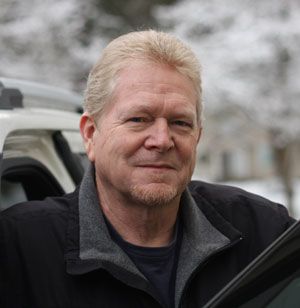Department of redundancy department
I stated last week that good discussions often bear repetition. Even though I may have covered certain driving topics over past years, there are regular readers who’ve missed them and new readers who have not seen them. Besides that, occasional reminders help all drivers, and there are new people entering the driving fray every day.
Reader B.K. shared a gripe common to many when she wrote, “Could you address what is the proper behavior when turning from a multilane street with two lanes allowedto turn into another multilane street? While I have not had an accident, that lane turn frequently frightens me, because of the unexpected behavior of other drivers who feel they have the right to be in the lane I am in.”
This consternation-causing situation can be remedied with common sense and an ability to count. Basically, if you turn from a far-right lane, you should enter the far-right lane of the intersecting street; if you make an allowed turn from the one just to the left of it, you must turn into the second lane from the right on the entered street. Of course, a similar but opposite method is used for legal left turns from multiple lanes. The Washington Driver’s Manual summarizes by stating, “If there are signs or lane markings that allow for two or more turning lanes, stay in your lane during the turn.”
Pay close attention to the sign or lane markings referenced above. On multiple-lane roads, lanes at intersections are often marked as right only, left only, straight only, or combinations of straight and left or right. Don’t assume that a far left lane may allow one to proceed either left or straight — the lane to one’s right may allow a left turn too.
Drivers tend to foul up even when only a single right or left lane allows a turn onto a multi-lane road. The law requires that you make such turns into the lane closest to you that allows traffic in the direction you are headed, THEN signal and change lanes as traffic allows and needs require. I see many motorists, for example, who make their left turn onto a multi-lane road and simultaneously bee-line to the right-hand lane. Such behavior can easily cause conflict for through traffic or right turners on that roadway.
B.K. also feels that the sparse presence of roundabouts in this region leaves many drivers unaccustomed to their proper use. I’ve reported before that there is a wealth of information on the topic at the Website: www.wsdot.wa.gov/safety/roundabouts.
The main error I’ve noticed by roundabout users is unnecessary stopping at the roundabout entrance. While you are required to yield to motorists already within the roundabout, there is no need to stop, absent traffic. Also, much like a freeway merge, a skillful roundabout entrance can usually be timed without stopping to enter ahead of, or just behind, a vehicle within the circle. Once inside the roundabout, then simply signal when ready to leave, effecting an overall straight path, a right-, left-, or U-turn.
J.M. brought up another subject I’ve covered years ago, and noted, “I routinely encounter jacked-up pickups where the front and rear bumpers are so high that they could go right over the bumper of the car they are colliding with resulting in a much higher chance of injury to the people in the car. Isn’t there some standard height range for bumpers that all vehicles must conform to?”
Yes, there is a written equipment requirement governing vehicle height in Washington and all other states. Legally, maximum front bumper height for passenger cars is 22 inches, half-ton trucks 24 inches, three-quarter-ton trucks 27 inches, and for larger trucks 28 inches. Measurement is to be made from a paved surface to the bottom of the bumper. These are the numbers for the state of Washington, summarized from the Washington Administrative Code for vehicle body requirements — other states may differ.
Remember, you can obtain a state driver’s guide at any licensing department and find digital versions on the Internet. The Internet is also a good place to look up road rules from various states.
Readers may contact Bill Love via e-mail at precisiondriving@spokesman.com.
